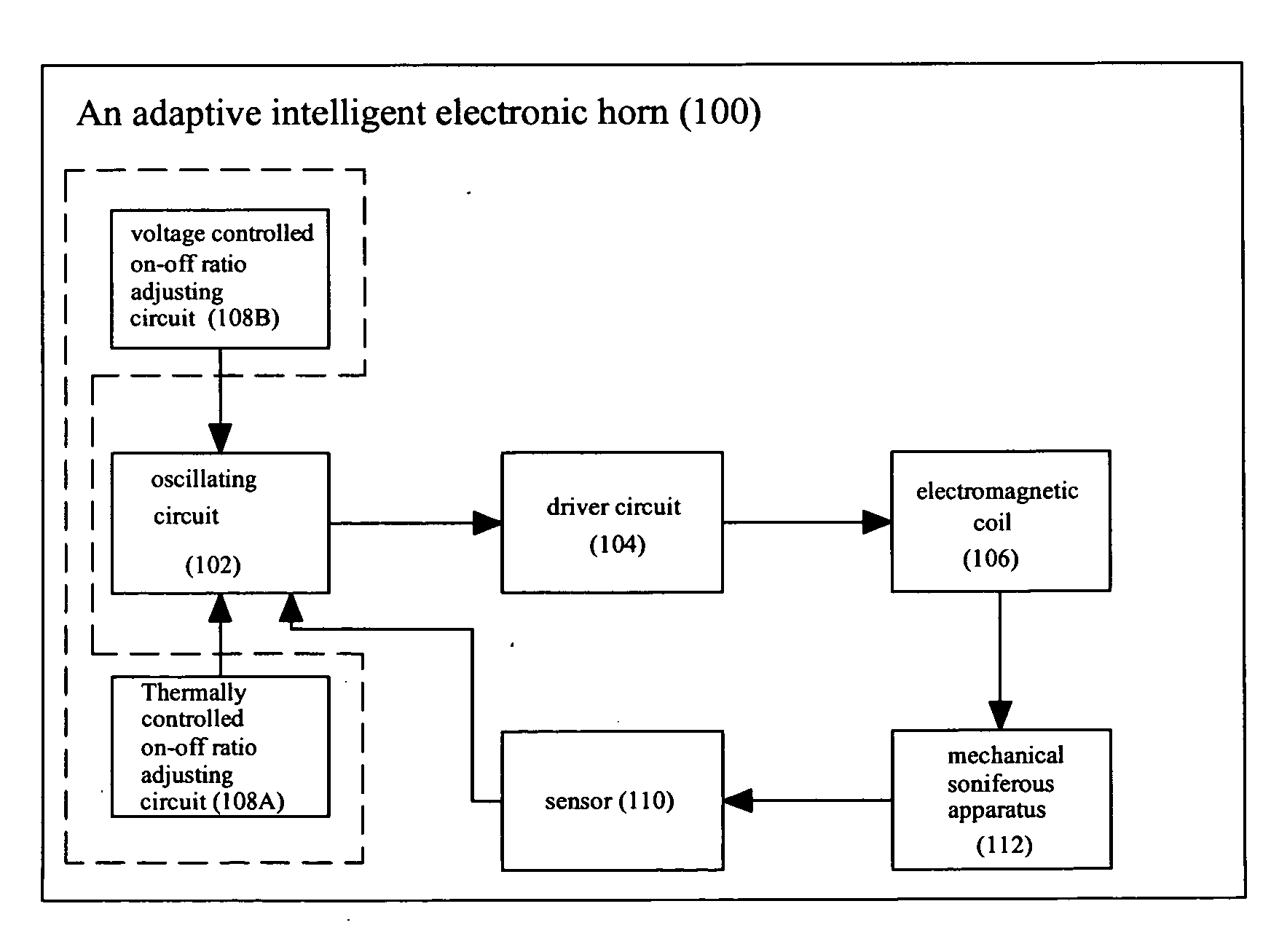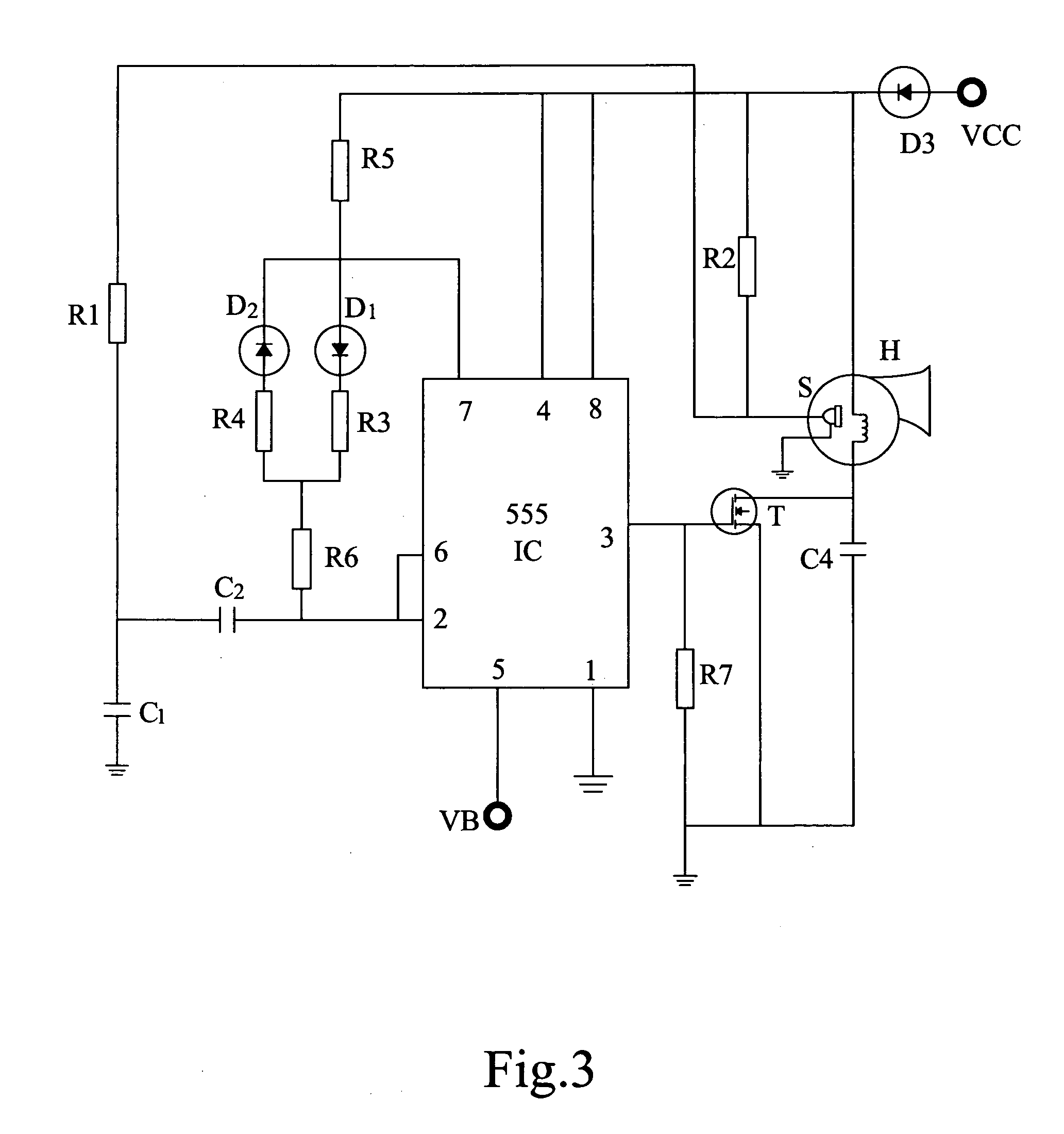Adaptive intelligent electronic horn
a technology of intelligent electronic horns and horns, applied in the field of electronic horns, can solve the problems of mechanical soniferous apparatuses that cannot be operated in fully harmony resonance, frequent oscillation, and inability to fully harmony the resonance of mechanical soniferous apparatus, and achieve the effect of wide range pulse width and increased sensors
- Summary
- Abstract
- Description
- Claims
- Application Information
AI Technical Summary
Benefits of technology
Problems solved by technology
Method used
Image
Examples
Embodiment Construction
[0019]The description is described in detail according to the appended drawings hereinafter.
[0020]In the present invention, with pulse width and oscillation frequency of oscillation signals from an oscillating circuit, a mechanical soniferous apparatus (112) oscillates under harmony resonance outputs max voice voltage.
[0021]As shown in FIG. 1, an adaptive intelligent electronic horn (100) includes said mechanical soniferous apparatus (112), an electromagnetic coil (106), a driver circuit (104), and said oscillating circuit; a sensor (110) is provided between said mechanical soniferous apparatus (112) and said oscillating circuit; an on-off ratio adjusting circuit (108) is provided at an input end of the oscillating circuit.
[0022]The sensor (110) is used to measure the oscillation frequency of the mechanical ratio adjusting circuit and feedback the measured oscillation frequency signal to the oscillating circuit.
[0023]Said sensor (110) can be selected from a sound sensor, a oscillati...
PUM
 Login to View More
Login to View More Abstract
Description
Claims
Application Information
 Login to View More
Login to View More - R&D
- Intellectual Property
- Life Sciences
- Materials
- Tech Scout
- Unparalleled Data Quality
- Higher Quality Content
- 60% Fewer Hallucinations
Browse by: Latest US Patents, China's latest patents, Technical Efficacy Thesaurus, Application Domain, Technology Topic, Popular Technical Reports.
© 2025 PatSnap. All rights reserved.Legal|Privacy policy|Modern Slavery Act Transparency Statement|Sitemap|About US| Contact US: help@patsnap.com



